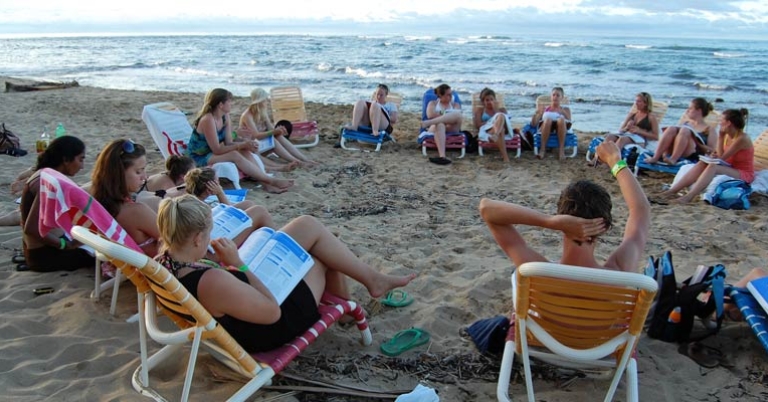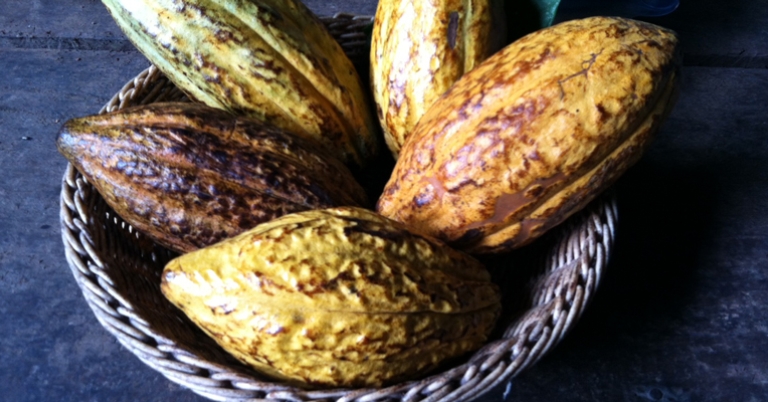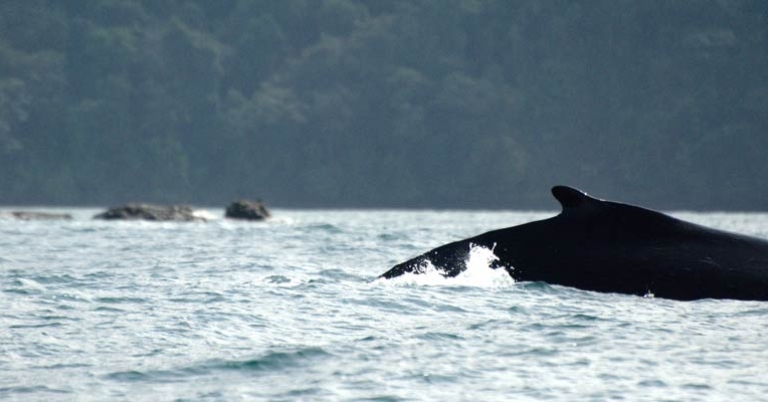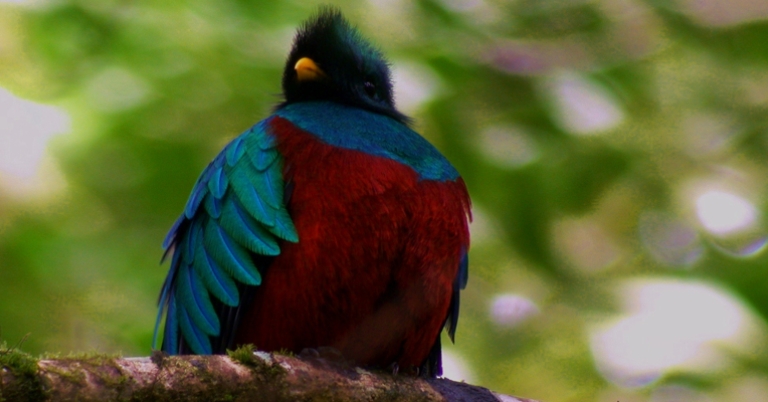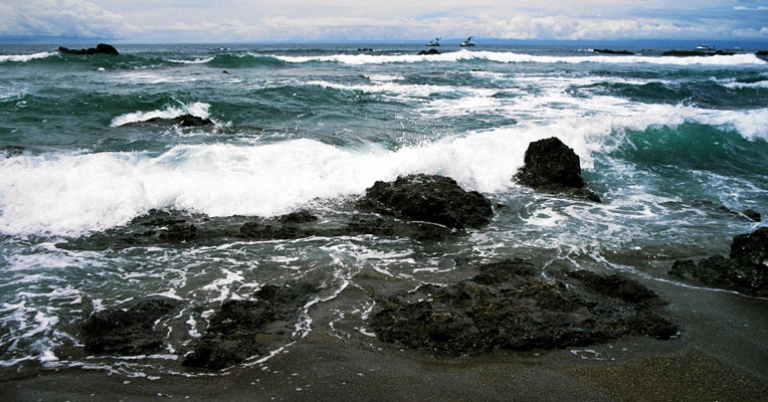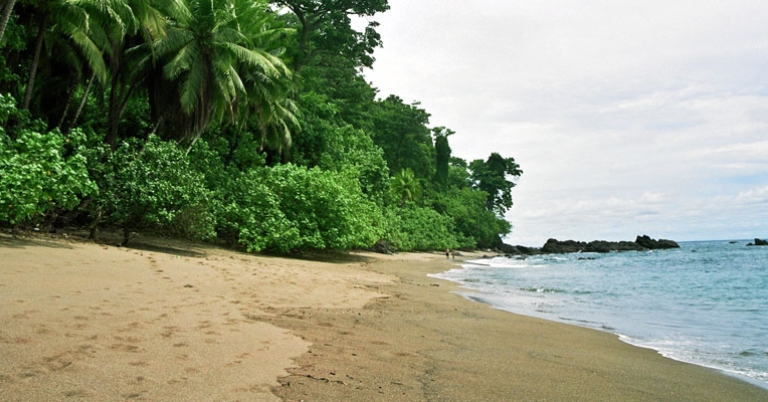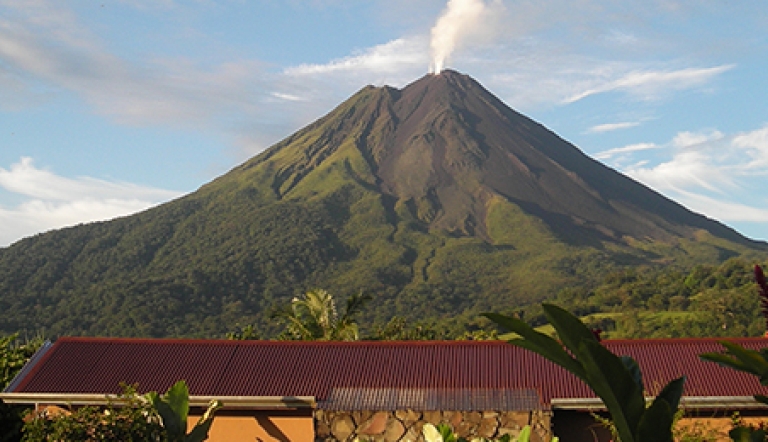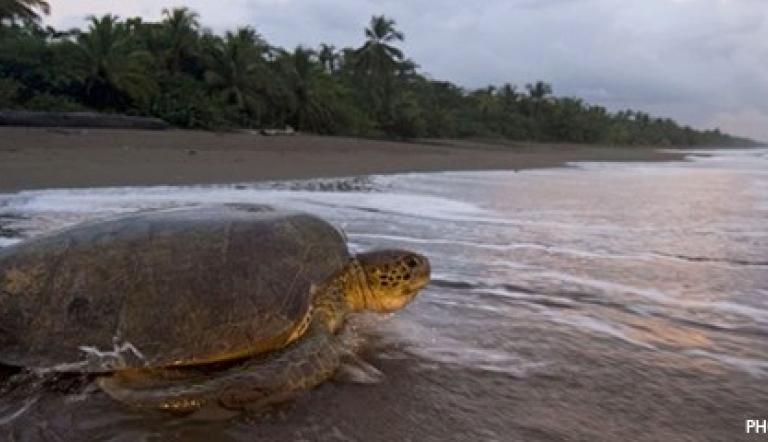Costa Rica | Experiential Learning in the Osa Peninsula and Cordillera de Talamanca
About this trip
Costa Rica’s south Pacific Coast is known for its rich biodiversity, both above and below the ocean surface. Discover the best the region has to offer during this hands-on expedition. Venture into the primary and secondary forests of coastal Dominical, then continue south to the pristine, largely unexplored Osa Peninsula. Assist with dolphin research in Golfo Dulce, contributing to scientists’ understanding of these intriguing creatures and supporting their conservation efforts. Then, head inland to the Talamanca Mountains to experience a self-sustaining farm firsthand. Connect with the individual stories of local families, seeing how they have changed their own lives while also positively impacting the environment.
Highlights
- Compare and contrast different ecosystems and microclimates, including coastal habitats, mangroves, rainforests, cloud forests, and páramo.
- Collect data and contribute to dolphin research at the Osa Peninsula’s Golfo Dulce.
- Take part in hands-on learning and farm work at a self-sustaining family homestead.
- Search for wildlife such as monkeys, sloths, tropical birds, and frogs on guided hikes.
- Learn how cacao is transformed into chocolate during a visit to Finca Kobo.
Land Cost
$2,925 - Oct 1, 2025 - Dec 31, 2026
$3,575 - Jan 1 - Dec 31, 2027
Book 7 travelers and 1 group
leader travels for free
Land Cost
$2,625 - Oct 1, 2025 - Dec 31, 2026
$2,975 - Jan 1 - Dec 31, 2027
Book 14 travelers and 2 group
leaders travel for free
Land Cost
$2,450 - Oct 1, 2025 - Dec 31, 2026
$2,795 - Jan 1 - Dec 31, 2027
Book 19 travelers and 2 group
leaders travel for free
What makes us different
Wildlife up-close
Service anytime
Sustainable travel
Custom-tailored trips
Support local communities
Flight arrangements
Daily Itinerary
Print ItinerarySan Jose
San Jose
Day 1Dominical
Dominical
Day 2Osa Peninsula
Osa Peninsula
Osa Peninsula
Osa Peninsula
Day 5Cordillera de Talamanca
Cordillera de Talamanca
Day 6Cordillera de Talamanca
Cordillera de Talamanca
Day 7San Jose
Departure
Pricing
Print PricingLand Cost
$2,925 - Oct 1, 2025 - Dec 31, 2026
$3,575 - Jan 1 - Dec 31, 2027
Book 7 travelers and 1 group
leader travels for free
Land Cost
$2,625 - Oct 1, 2025 - Dec 31, 2026
$2,975 - Jan 1 - Dec 31, 2027
Book 14 travelers and 2 group
leaders travel for free
Land Cost
$2,450 - Oct 1, 2025 - Dec 31, 2026
$2,795 - Jan 1 - Dec 31, 2027
Book 19 travelers and 2 group
leaders travel for free
What's Included
- Accommodations may include multi-share rooms and shared bathrooms
- Activities and meals as mentioned in itinerary
- Airport transfers are provided on group basis (not individual flight basis)
- Bottled water or water refill station during transfers
- Carbon Offset
- Full time guide for the duration of your program
- Private transportation and driver for the duration of the program
What's Not Included
- International airfare
- Items of personal nature
- Tips
- Travel Insurance
Pricing Details
Prices are valid for travel from Oct 1, 2025 - Dec 31, 2026. Holiday surcharges may apply.
Travel Info
Print Travel InfoEntry & Exit Requirements
U.S. citizens must have a valid passport to enter Costa Rica. Passports must be valid for at least the duration of your stay. As this requirement is subject to change at any time without notice, we recommend at least 6 months' validity.
A visa is not required for visits up to 90 days.
If you are not traveling with a U.S. passport, please check with the Costa Rican Embassy for the requirements based on your nationality.
Health Information
IMMUNIZATIONS
The Centers for Disease Control recommends that all travelers be up to date on routine vaccinations such as measles-mumps-rubella (MMR) vaccine, diphtheria-pertussis-tetanus vaccine, varicella (chicken pox) vaccine, and your yearly flu shot before every trip.
There are no vaccinations required for entry into Costa Rica, unless you are traveling from a country where yellow fever transmission is a risk. Though not required for entry, the CDC recommends vaccination against hepatitis A, hepatitis B, and typhoid for most unvaccinated travelers to Costa Rica.
Please consult your physician for additional information and recommendations based on your individual circumstances.
MALARIA
The CDC advises that malaria transmission is present in certain regions of Costa Rica, primarily in the provinces of Alajuela and Limón. Malaria is caused by a parasite found in Anopheles mosquitos, which are active from dusk until dawn. If you are visiting areas where malaria is present and choose to use an anti-malarial drug, as recommended by the CDC, see your doctor for a prescription. To protect against mosquitos, cover exposed skin with lightweight, long-sleeved shirts and pants, consider treating clothes with permethrin, and use an insect repellent containing an active ingredient like DEET or picaridin. Apply sunscreen first, followed by the repellent (preferably 20 minutes later).
OTHER INSECT-BORNE ILLNESSES
Other insect-borne illnesses are known to occur in Costa Rica, including dengue fever, leishmaniasis, Zika virus, and others. Travelers to Costa Rica should protect themselves against insect bites using the measures described above.
After spending time outdoors in grassy or wooded areas, the CDC recommends showering and conducting a full-body check for ticks. If you find a tick attached to your skin, safely remove it as soon as possible.
As a precaution, the CDC advises women who are pregnant to consider postponing travel to any area where Zika virus transmission is ongoing.
OTHER NUISANCE PESTS
In places with rich vegetation and proximity to bodies of water, you may encounter chiggers. These are mites that can superficially attach to skin and leave behind itchy red bumps that appear 3-6 hours after initial contact. Their bites are sometimes mistaken for those of bed bugs or other insects; however, unlike bed bugs, which tend to target exposed skin, chiggers look for skin folds or areas where clothing fits tightly, like the ankles, waist, underarms, elbow creases, and the back of the knees to feed on broken down skin cells. They do not transmit any illnesses in Costa Rica.
We recommend that travelers to Costa Rica protect themselves against chigger bites using the measures noted above. Additionally, if potential exposure occurs, we recommend showering and scrubbing skin with soap and hot water as quickly as possible. If that is not immediately feasible, promptly rub skin with a dry towel or cloth and place any exposed clothing in a zip-top bag until it can be washed. To treat any itchiness, we suggest over-the-counter anti-itch lotion and/or oral antihistamines.
SUN EXPOSURE
The effects of the sun can be damaging to the eyes and skin. Spending time outdoors exposes you to the sun’s harmful ultraviolet (UV) rays, even on cloudy days. To protect yourself from the sun, use a broad spectrum sunscreen of at least SPF 15, protect skin with clothing, wear a wide-brimmed hat and sunglasses, and drink plenty of fluids.
ALTITUDE SICKNESS
If your itinerary includes locations at high elevation (above 5,000 feet), altitude sickness is a possibility. Stay hydrated and well-rested, and avoid heavy, fatty foods and alcohol in the days before arrival. Consult your physician prior to travel for advice specific to your situation.
Respiratory Illness Protocols
Please review our Respiratory Illness Protocols page, which explains our policy and procedures if you or another traveler should develop symptoms of a respiratory illness during your trip. Your participation in a Holbrook Travel program indicates that you are in agreement with these protocols.
Resources
Print ResourcesPacking Recommendations
Everyone has personal preferences when it comes to packing; for this reason, the information below is offered as a general guide and not a definitive list. You know yourself best: Use your discretion and pack what you think will serve you, based on your personal preferences and specific itinerary.
You may find many of the items below in our Gear Store.
CLOTHING
Casual, comfortable clothing is suitable for most activities in Costa Rica. You may wish to bring a slightly nicer outfit or two (eg sundress, polo shirt) if your itinerary includes dinners out or more formal activities.
Bring enough clothing suitable for the length of your program. If you prefer to pack light, note that many hotels offer laundry services at additional cost. If you plan to hand-wash items, remember that humidity may delay drying time.
Pack clothing that can be worn in layers to adapt to weather changes throughout the day. Costa Rica’s rainy season is May through November, but it can rain at any time. Clothing that wicks away moisture and dries quickly is recommended.
If your program includes visits to higher elevations (e.g. Savegre, Monteverde, or Cordillera de Talamanca), warm clothing is strongly recommended. Temperatures can get quite chilly, especially at night and early in the morning, and hotel rooms don’t always have heat. It can also be windy at times. Consider packing a warm underlayer, as well as a warm, protective outer layer.
For birding programs, pack muted colors such as khaki, olive, and forest green. If participating in turtle patrols, bring dark-colored pants and shirts.
- A combination of short-sleeved and lightweight, long-sleeved shirts for sun and mosquito protection
- Shorts
- Lightweight, quick-drying long pants for sun and mosquito protection; jeans tend to be uncomfortable in hot and humid conditions, but are fine in the cooler highlands.
- Undergarments
- Sleepwear
- Lightweight jacket or sweater/sweatshirt (or heavier weight if visiting high-elevation areas)
- 1-2 bathing suit(s) for the beach, if applicable, plus many hotels have pools
- Socks – Bring extra pairs. If your itinerary indicates muddy hikes with rubber boots provided on-site, pack a few pairs of knee socks to prevent blisters.
- Shoes – Consider your specific itinerary when choosing footwear. For most programs, you’ll likely want at least one pair of comfortable, closed-toe walking or hiking shoes suitable for forest hikes and walking over cobblestones or other uneven terrain. Sturdier hiking boots may be appropriate for more active itineraries. In addition, many participants opt for a pair of sturdy sport-strap sandals (e.g. Keens, Tevas, or similar) and/or casual flip-flops or sandals. If you’re whitewater rafting or visiting the beach, you may also want a pair of aqua socks, reef walkers, or water shoes.
- Lightweight rain jacket, hooded poncho, and/or windbreaker
- Visor or wide-brimmed sun hat
- Bandana, scarf, or neck gaiter
Personal Toiletries
Pack toiletries based on your personal preferences and habits. Below are just a few recommendations to keep in mind.
- Shampoo, conditioner, lotion, deodorant/antiperspirant , etc. – If possible, avoid strong fragrances if you are sensitive to insect bites (and to be considerate of you fellow travelers).
- Soap and washcloth or a small, quick-drying microfiber towel – Washcloths are not standard in all hotels. If you normally use a washcloth, you may wish to bring one from home.
- Hairbrush, comb, hair ties, shower cap. Most—but not all—hotel rooms provide a hair dryer, but you may wish to bring one from home.
- Toothbrush and toothpaste
- Razor
- Ear plugs, especially if you are a light sleeper
- Personal hygiene products
- Insect repellent with DEET or picaridin (see note below about treating clothing with permethrin)
- Sunscreen and lip balm with SPF – If you’ll be in the ocean, we recommend reef-safe sunscreen.
- Aloe vera gel
- A travel pack of tissues – also useful as napkins or toilet paper if needed
In addition to your personal toiletries, it is useful to pack a small medical kit, which you can easily prepare. Helpful items might include: bandages, antihistamine, a pain reliever, motion sickness and/or altitude sickness medication (if you are prone to either), anti-diarrhea medicine, individually wrapped pre-moistened towelettes and/or hand sanitizer, antibiotic ointment, anti-fungal cream, moleskin for blisters, eye drops, tweezers, a mini sewing kit, and an extra pair of disposable contact lenses or eyeglasses if you wear them.
Days before you leave home, you may wish to consider spraying any clothing, socks, and shoes that will be worn in lowland, tropical sites with permethrin, an anti-parasite medication, to repel irritating pests and prevent the spread of disease. A recommended brand is Sawyer. Carefully read all instructions before use. Please note permethrin is highly toxic to cats and fish, and some aerosol products may be harmful to birds. Side effects may include minor itching, burning, or redness. You may want to use a laundry marker to label and keep track of which socks are permethrinized. Only one application per item is necessary; permethrin on treated clothes remains effective through several washings. Permethrin should NOT be applied directly to skin.
Miscellaneous
Remember to pack valuables such as your passport, cash/credit cards, and medications in your carry-on luggage.
- Passport and photocopies of all travel documentation
- Personal insurance card and travel insurance information
- Money – ATM/credit card, traveler's checks, and/or cash; small bills in good condition are recommended
- Prescription medicines (if applicable), with a copy of the prescription
- Yellow fever certificate (if required; only if arriving from a country where yellow fever transmission is a risk)
- Sunglasses with strap
- Small day pack for hikes and excursions
- Flashlight and/or head lamp
- Travel alarm clock or inexpensive waterproof wristwatch with alarm – Not all hotels provide alarm clocks.
- A pocket calculator or phone to assist with conversions and currency exchange
- Binoculars with lens cleaner
- Camera and related equipment, such as charger, lenses, and extra memory cards
- Reusable water bottle – especially important in national parks, which do not permit single-use plastic bottles or containers
- Non-perishable snacks
- Pocket-knife or multipurpose tool - Pack in your checked luggage
- Zip-top style bags – useful for packing toiletries, sorting clothing, storing damp or muddy shoes, or as a dry bag for protecting electronics
- Notepad or travel journal and pen
- Music or reading material for down time, long bus drives, or on the airplane, and a portable bright light to read by
- Collapsible walking stick with rubber tip
- A small quantity of laundry detergent if you’ll be washing clothing by hand
- Travel-size umbrella – Some people find this unwieldy to carry, while others find it offers better protection than a rain jacket alone.
- Money belt
- Chargers for electronics

Questions
For more information, contact us at 800-451-7111 or email travel@holbrooktravel.com.

